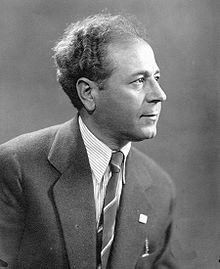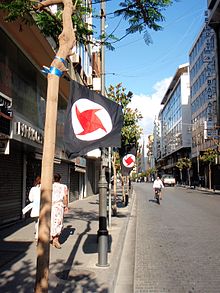- Syrian Social Nationalist Party
-
Syrian Social Nationalist Party
الحزب السوري القومي الاجتماعي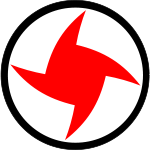
Leader Syria: Dr.Ali Haidar
Lebanon: Assaad HardanFounder Antun Saadeh Founded 1932 Headquarters Beirut, Lebanon
Damascus, SyriaNewspaper Al-Binaa Ideology Syrian nationalism,
Social-nationalism,
Secularism,
Anti-ZionismPolitical position Far-right[1][2] Religion Secular Official colours Black, Red, White Parliament of Syria 2 / 250Parliament of Lebanon 2 / 128Cabinet of Lebanon 1 / 30Cabinet of Syria 1 / 30Website alqawmi.info and ssnp.net Party flag 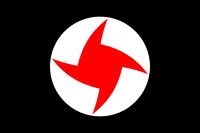
Politics of Lebanon
Political parties
Elections
Politics of Syria
Political parties
ElectionsThe Syrian Social Nationalist Party (SSNP) (Arabic: الحزب السوري القومي الاجتماعي, transliterated: al-Ḥizb as-Sūrī al-Qawmī al-'Ijtimāʕī, often referred to in French as Parti Populaire Syrien or Parti Social Nationaliste Syrien), is a secular nationalist political party in Lebanon and Syria. It advocates the establishment of a Syrian nation state spanning the Fertile Crescent, including present day Syria, Lebanon, Iraq, Jordan, the Palestinian Territories, Israel, Cyprus, Kuwait, Sinai, southeastern Turkey and southwestern Iran.[3] It is the largest political group in Syria after the Ba'ath,[4] with over 100,000 members. Founded in Beirut in 1932, the party has played a significant role in Lebanese politics since its founding, notably being involved in attempted coups in 1949 and 1961. It was active in resistance against the Israeli occupation of Lebanon from 1982 on. It is now part of the March 8 Alliance. In Syria, the SSNP became a major political force in the early 1950s, but was thoroughly repressed in 1955. It remained organised, and in 2005 was legalised and joined the Ba'ath Party-led National Progressive Front.
Contents
Foundation and early years
The SSNP was founded by Antun Saadeh, a Lebanese Syrian nationalist philosopher from a Greek Orthodox family in the town of Dhour el Shweir. Saadeh had emigrated to South America in 1919 (via the USA where he stayed for about a year before continuing on to Brazil), at the age of fifteen, and in the years he lived there engaged in both Arabic-language journalism and Syrian nationalist political activity. On his return to Lebanon in 1930 he continued working as a journalist and also taught German in the American University of Beirut.[5]:43 In November 1932 he secretly established the first nucleus of the Syrian Social Nationalist Party, which operated underground for the first three years of its existence.[5] In 1933 it started publishing a monthly journal called Al-Majalla which was distributed in the American University of Beirut. The articles written in that journal and the speeches given by Saadeh consolidated the ideological basis of the party, and contributed to its popularity.[5]:43 Saadeh finally outlined his vision in a speech in a secret meeting in 1 June 1935.[5]
Despite Saadeh's claims, some authors state that when the party began overt activity, it was the object of many critiques due to having many ideological and organizational resemblances to European fascism, and due to the resemblance of its external symbols to those of German Nazism.[6][7][8] Such resemblances went against the idea that it was an authentic national ideology and couldn't be acknowledged by the party.[5] The party's founder Saadeh was aware of these accusations and he addressed them during his speech of 1 June 1935 (long before the events of World War II, and before the party was given publicity and the accusations started appearing in the press):
“ The system of the Syrian Social Nationalist Party is not a Hitlerite or a Fascist system, but that it is purely a Syrian system which does not stand on unprofitable imitation, but on basic originality which is one of the characteristics of our people. ” —Antun Saadeh, June 1935.[5][9]
Saadeh was sent to trial in 1936 and spent six months in prison for creating a clandestine party.[5] He was also accused in the trial of having been in contact with the fascist movements of Germany and Italy, but the charge was dropped thanks to a letter from Germany denying any relationships.[5] The party was also the object of harsh repression by the French mandatory authorities. Saadeh himself was arrested several times, and in 1938 was forced to remain in South America after a visit he made there before the outbreak of World War II.[10] According to Reeva S. Johnson, Saadeh, the party's 'leader for life', was an admirer of Adolf Hitler influenced by Nazi and fascist ideology.[11][12] The party adopted a reversed swastika as the party's symbol, sang the party's anthem to Deutschland über alles, and included developing the cult of a leader, advocating totalitarian government, and glorifying an ancient pre-Christian past and the organic whole of the Syrian Volk or nation.[6][11]
The party he founded was organised with a hierarchical structure and a powerful leader. Its ideology was an entirely secular form of nationalism; indeed, it posited the complete separation of religion and politics as one of the two fundamental conditions for real national unity. The other condition was determined economic and social reform.[13]
Saadeh's concept of the nation was that it was shaped by geography, not by ethnic origins, language or religion, and this led him to conclude that the Arabs could not form one nation but many nations could be called Arab. Arab nationalist thinker Sati' al-Husri considered that Saadeh "misrepresented" Arab nationalism, incorrectly associating it with a Bedouin image of the Arab and with Muslim sectarianism. Palestinian historian Maher Charif sees Saadeh's theory as a response to the religious diversity of Syria, and points to his later extension of his vision of the Syrian nation to include Iraq, a country also noted for its religious diversity, as further evidence for this.[14] The party also accepted that due to "religious and political considerations", the separate existence of Lebanon was necessary for the time being.[13]
Lebanese historian Kamal Salibi gives a somewhat contrasting interpretation, pointing to the position of the Greek Orthodox community as a large minority in both Syria and Lebanon for whom "the concept of pan-Syrianism was more meaningful than the concept of Arabism" while at the same time they resented Maronite dominance in Lebanon. Saadeh, according to Salibi,
found a ready following among his co-religionists. His idea of secular pan-Syrianism also proved attractive to many Druzes and Shiites; to Christians other than the Greek Orthodox, including some Maronites who were disaffected by both Lebanism and Arabism; and also to many Sunnite Muslims who set a high value on secularism, and who felt that they had far more in common with their fellow Syrians of whatever religion or denomination than with fellow Sunnite or Muslim Arabs elsewhere. Here again, an idea of nationalism had emerged which had sufficient credit to make it valid. In the Lebanese context, however, it became ready cover for something more archaic, which was essentially Greek Orthodox particularism.[15]
Prof. Salibi remarks on the beginnings of Saadeh's party in the 1930s: "[A]mong its first members were students and young graduates of the American University of Beirut." This early party was "mainly Greek Orthodox and Protestants with some Shi'ites and Druzes... ." In Lebanon as a whole the party was not popular. "Christians were generally opposed to their Syrian unionism, while Moslems were suspicious of their reservations with regard to pan-Arabism. [T]he Lebanese authorities were able to suppress them without difficulty."[16]
From 1945 on, the party adopted a more nuanced stance regarding Arab nationalism, seeing Syrian unity as a potential first step towards an Arab union led by Syria.[13]
According to historian Stanley G. Payne, the Arab nationalism was influenced by European fascism, with the creation of at least seven Arab nationalist shirt movements similar to the brown shirt movement by 1939, with the most influenced ones being the SSNP, the Iraqi Futawa youth movement and the Young Egypt movement.[17] These three movements would share characteristics like being territorially expansionist, with the SSNP wanting the complete control of Syria, belief in the superiority of their own people (with Saadeh theorizing a "distinct and naturally superior" Syrian race), being "nonrationalist, anti-intellectual, and highly emotional" and "[emphasizing] military virtues and power [and stressing] self-sacrifice".[17] Also according to Payne, all these movements received strong influence from European fascism and praised the Italian and German fascism but "[they never became] fully developed fascist movements, and none reproduced the full characteristics of European fascism"; the influence in Arab nationalism remained long after 1945.[17] Also, Saadeh's superior race was not a pure one, but a fusion of all races in Syrian history.[17] The SSNP would be "[a] elite group, with little structure for mobilization".[17]
The SSNP Emblem and Flag
The SSNP emblem is a combination of the crescent and the cross.[18] The party flag features a red hurricane, called the zawba'a, within a white circle on a black background. Each arm symbolizes one of the four virtues of the party's mission: freedom, duty, discipline and power.[5]:45 It is alleged that the symbol was modeled after the Nazi swastika.[6][7][8][11][19][20]
The SSNP in Lebanon
Lebanon 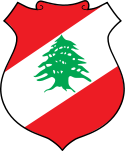
This article is part of the series:
Politics and government of
LebanonPresidencyGovernment- Prime Minister
- Cabinet
Legislature- Parliament
- Current members
- Lebanese Forces
- Movement of the Future
- Kataeb Party
- Hezbollah
- Free Patriotic Movement
- Syrian Social Nationalist Party
- Presidential 2008
- Parliamentary 2009
- Local 2010
Other issues- Governorates
- Districts
- Municipalities
- Armed Forces
- Human rights
- Foreign relations
1947–1949
Saadeh returned to Lebanon in 1947. Upon his arrival, Saadeh made a famous speech declaring his opposition to the government. The government retaliated by arresting members of the party and tensions remained between the two sides until it culminated in a failed coup d'état attempt.
In 1949, members of the pro-government Phalanges Party attacked and burned the SSNP's newspaper office in The Gemayze area, seconds after Saadeh left the place. The government response to the attack was to withraw both parties' licenses and declare both parties illegal, but only SSNP members were arrested (including top officials), before a memo was issued reinstating the Phalange's license. Police broke into Saadeh house to arrest him, but he had already left. In the midst of these events, Saadeh declared a coup d'état against the government and starting organizing the party's members. He received a message from the Syrian military dictator Husni al-Za'im offering him weapons to support his coup d'état, and asked to meet him in his palace. Saadeh accepted the invitation and traveled to Syria to meet the president. When he arrived to the palace, he was instantly apprehended and handed over to the Lebanese authorities who tried and executed him within 8 hours.[21]
1950–1960
The party was seen in these years as a right-wing, anti-Communist organization.[22] The party opposed Nasserite influences and objected to the declaration of The United Arab Republic. This opposition was based on ideological beliefs.
During the Lebanon crisis of 1958, party members participated on the Government side, fighting against the Arab nationalist rebels in northern Lebanon and in Mount Lebanon.[23][citation needed] The party was subsequently legalized.
Notable Members: Samaan Nader
1961–1975
In 1961 the party launched an abortive coup attempt in Lebanon, resulting in renewed proscription and the imprisonment of many of its leaders.[24] In prison the SSNP militants read and discussed politics and reconsidered their ideology, coming under the influence of Marxism and other left-wing ideas.[citation needed] By the beginning of the 1970s, the party had undergone a considerable ideological transformation, and was seen as decidedly left-wing and no longer deeply inimical to pan-Arab nationalism. These ideological turns, however, resulted in splits, and there are now two rival groups laying claim to Saadeh's mantle.[citation needed]
Lebanese Civil War
Main article: Lebanese Civil WarSyrian Social Nationalist Party Participant in Lebanese civil war (1975-1990) Active present Groups Lebanese National Movement (LNM), Lebanese National Resistance Front (LNRF) Leaders Headquarters Hamra Street (Beirut), Amioun,(North Lebanon)Dhour El Choueir(Mount Lebanon) Strength 10,000 fighters Allies Lebanese National Resistance Front, Palestine Liberation Organization (PLO), Lebanese Communist Party, Communist Action Organization in Lebanon, Lebanese National Movement, Popular Front for the Liberation of Palestine , Progressive Socialist Party, Syrian Army, Hezbollah, Amal Movement, Al-Murabitoun Opponents Lebanese Forces, Tigers Militia, Kataeb Party, Guardians of the Cedars, Israel Defense Forces , South Lebanon Army, Islamic Unification Movement With the outbreak of the Lebanese Civil War in 1975, SSNP militias fought alongside the nationalist and leftist forces allied in the Lebanese National Movement (LNM), against the Phalangists and their right-wing allies of the Lebanese Front. An important development followed with the renewal of contact between the party and its former bitter enemy, the Syrian Baath Party.[citation needed]
After the Israeli invasion of Lebanon in 1982 and subsequent rout of the leftist forces, a number of the leftist organizations regrouped to engage in resistance to the Israeli occupation. Along with the Lebanese Communist Party, the Communist Action Organization, and some smaller leftist groups, the SSNP played a prominent role in this. One of the best-known early actions of the resistance was the killing of two Israeli soldiers in the Wimpy Cafe on west Beirut's central Rue Hamra by party member Khalid Alwan. The party continues to commemorate this date. The FBI blames them for the assassination of Bachir Gemayel in 1982.[25]
In 1983 the party joined the Lebanese National Salvation Front established to oppose the abortive May 17 accord with Israel signed by Gemayel's brother and successor Amine Gemayel.[citation needed]
Some party members were willing to sacrifice their lives through suicide attacks in resistance against Israel, the first being in 1985.[26] A party member Sana'a Mehaidli, who martyred herself at age 16 against an Israeli checkpoint in Lebanon, is considered "the progenitor of all female martyrs for the Palestinian cause".[26] Diego Gambetta says that they can't be considered a terrorist organization because they only act against military targets, and that they should be considered a guerrilla organization.[26]
Recent history
The SSNP participated in the 1992 Lebanese general election and won 6 seats. In the 1996 Lebanese general election the party won 5 seats. In 2000 Lebanese general election the party won 4 seats. In the 2005 Lebanese general elections the party won 2 seats and in the 2009 Lebanese general election again 2 seats.
During the 2008 conflict in Lebanon, at least 14 people were killed in the town of Halba, in the Akkar region of north Lebanon, as about 100 pro-Future Movement gunmen attacked an office of the SSNP.[27] 10 of the dead were SSNP members, three were government loyalists and one was an Australian citizen of Lebanese descent on vacation in Lebanon, who was trying to get information at the SSNP offices about evacuating from the city.[28][29][30] The Australian father of four, Fadi Sheikh, reportedly had his hands and feet cut off.[31][32]
The SSNP in Syria
Syria 
This article is part of the series:
Politics and government of
SyriaConstitutionExecutive- President
- Vice President
- Prime Minister
- Adel Safar
- Cabinet
LegislatureJudiciary- Court system
- High Judicial Council
- Supreme Constitutional Court
DivisionsElections- General elections
- Political parties
- National Progressive Front
- Ba'ath Party
- 2011 Syrian protests
Foreign policy
In Syria the SSNP grew to a position of considerable influence in the years following the country's independence in 1946, and was a major political force immediately after the restoration of democracy in 1954. It was a fierce rival of the Syrian Communist Party and of the radical pan-Arab Baath Party, the other main ideological parties of the period. In April 1955 Colonel Adnan al-Malki, a Baathist officer who was a very popular figure in the Syrian army, was assassinated by a party member. This provided the Communists and Baathists with the opportunity to eliminate their main ideological rival, and under pressure from them and their allies in the security forces the SSNP was practically wiped out as a political force in Syria.
The SSNP's stance during the Lebanese civil war was consistent with that of Syria, and that facilitated a rapprochement between the party and the Syrian government. During Hafez al-Assad's presidency, the party was increasingly tolerated. After the succession of his son Bashar in 2000, this process continued. In 2001, although still officially banned, the party was permitted to attend meetings of the Baath-led National Progressive Front coalition of legal parties as an observer. In Spring 2005 the party was legalised in Syria. It is considered to be one of the largest political parties in the country, after the ruling Baath Party, with perhaps 100,000 members.[33]
In the 22 April 2007 election for the People's Council of Syria, the party gained 2 out of 250 in the parliament.
SSNP politicians in Lebanon
- Dr. Antoine Abu Haidar
- Dr. Milad el Sibaaly
- Assaad Hardan
- Salim Saade
- Gebran Areiji
- Ghassan Ashqar
- Mahmoud Abdel Khalek
- Mahmoud Al Hassan
- Georges Bourgi
- Ali Qanso
SSNP politicians in Syria
- Joseph Sweid
- Bushra Massouh
- Issam Bagdi
SSNP leaders
- Antun Saadeh (1932–1949)
- George Abdul Massih
LEBANON
- Assad Ashqar
- Abdallah Saadeh
- Inaam Raad
- Mahmoud Abdel Khalek
- Ali Qanso
- Gebran Areiji
- Assaad Hardan
SYRIA
- Dr. Ali Haidar
See also
Footnotes
- ^ Robinson, James (19 Feb 2009), "Christopher Hitchens on Beirut attack: 'they kept coming. Six or seven at first'", Guardian.co.uk (London), http://www.guardian.co.uk/media/2009/feb/19/christopher-hitchens-beirut-attack, retrieved 23 June 2011
- ^ Pipes, Daniel (Aug 1988), "Radical Politics and the Syrian Social Nationalist Party", International Journal of Middle East Studies, http://www.danielpipes.org/5788/radical-politics-and-the-syrian-social-nationalist-party, retrieved 23 June 2011
- ^ Irwin, p. 24; ssnp.com "Our Syria has distinct natural boundaries…" (accessed 30 June 2006).
- ^ http://www.debka.com/headline.php?hid=5425 The SSNP is now Syria’s largest party after the ruling Baath.
- ^ a b c d e f g h i Nordbruch Goetz (2009). Nazism in Syria and Lebanon: The Ambivalence of the German Option, 1933-1945. Taylor & Francis. ISBN 0203888561, 9780203888568. http://books.google.com/books?id=iAWBkDAv4TkC&pg=PA45&dq=Syrian+social+nationalist+nazi+fascist. "(...) during his speech of 1 June 1935 (...) Antun Saadeh declared (...) "(...) The Syrian Social Nationalist Party is neither a Hitlerite nor a Fascist one, but a pure social nationalist one. It is not based on useless imitation, but is the result of an authentic invention. (...)""
- ^ a b c Ya’ari, Ehud (June 1987). "Behind the Terror". Atlantic Monthly. http://www.theatlantic.com/issues/87jun/yaari.htm. "[The SSNP] greet their leaders with a Hitlerian salute; sing their Arabic anthem, "Greetings to You, Syria," to the strains of "Deutschland, Deutschland über alles"; and throng to the symbol of the red hurricane, a swastika in circular motion."
- ^ a b Pipes, Daniel (1992). Greater Syria. Oxford University Press. pp. 100–101. ISBN 0195060229. http://books.google.com/books?id=J3PsAb1uV94C. "The SSNP flag, which features a curved swastika called the red hurricane (zawba'a), points to the party's fascistic origins."
- ^ a b Yamak, Labib Zuwiyya (1966). The Syrian Social Nationalist Party: An Ideological Analysis. Harvard University Press. http://books.google.com/books?id=98tBAAAAIAAJ&q=The+Syrian+Social+Nationalist+Party:+An+Ideological+Analysis&dq=The+Syrian+Social+Nationalist+Party:+An+Ideological+Analysis&pgis=1.
- ^ http://www.ssnp.com/new/library/saadeh/misc/en/june_1_35.htm
- ^ Charif, pp. 243-244n
- ^ a b c Johnson, Michael (2001). All Honourable Men. I.B. Tauris. p. 150. ISBN 1860647154. http://books.google.com/books?id=Zydtz0dDntQC. "Saadeh, the party's 'leader for life', was an admirer of Adolf Hitler and influenced by Nazi and fascist ideology. This went beyond adopting a reversed swastika as the party's symbol and singing the party's anthem to Deutschland über alles, and included developing the cult of a leader, advocating totalitarian government, and glorifying an ancient pre-Christian past and the organic whole of the Syrian Volk or nation."
- ^ Simon, Reeva S. (1996). Encyclopedia of the Modern Middle East. Macmillan Reference USA. ISBN 0028960114. http://books.google.com/books?id=vKptAAAAMAAJ&q=%22Syrian+Social+Nationalist+Party%22+nazi&dq=%22Syrian+Social+Nationalist+Party%22+nazi&pgis=1. "The Syrian Social Nationalist party (SSNP) was the brainchild of Antun Sa'ada, a Greek Orthodox Lebanese who was inspired by Nazi and fascist ideologies."
- ^ a b c Hourani, p. 326
- ^ Charif, p. 216
- ^ Kamal Salibi (1988, 1998), pp. 54-55
- ^ K. S. Salibi, The Modern History of Lebanon (New York: Praeger 1965) at 180.
- ^ a b c d e Stanley G. Payne (1996). A history of fascism, 1914-1945 (illustrated, reprint ed.). Routledge. pp. 352–354. ISBN 1857285956, 9781857285956. http://books.google.com/books?id=9wHNrF7nFecC&pg=PA353&dq=Antun+Saadeh+fascism.
- ^ "SSNP website". http://ssnp.net/content/view/378/100.
- ^ Becker, Jillian (1984). The PLO: The Rise and Fall of the Palestine Liberation Organization. Weidenfeld and Nicolson. ISBN 0297785478. http://books.google.com/books?id=sgu7AAAAIAAJ&q=SSNP+swastika&dq=SSNP+swastika&pgis=1. "[The SSNP] had been founded in 1932 as a youth movement, deliberately modeled on Hitler's Nazi Party. For its symbol it invented a curved swastika, called the Zawbah."
- ^ Michael W. Suleiman (1965). Political parties in Lebanon. University of Wisconsin. p. 134. "The flag of the Syrian Social Nationalist Party has a black background with a red hurricane (reversed swastika) in the middle, encircled by a white rim (...)" also pages 111-112 in the edition of Cornell University Press, 1967 "Thus, the Syrian national anthem for the PPS sang "syria, Syria uber alles" to the same familiar tune of "Deutschland, Deutschland uber alles"(176) The hand gestures in saluting and the "long live the leader" bore striking resemblances to the Nazi practice. The swastika was replaced with a hurricane as a PPS symbol,(177) while the storm or combat troops were present in both. Both Hitler and Saadeh, in addition to having the same title of 'the leader', held and exercised all legislative and executive authority."
- ^ Lebanese Broadcasting Corporation Pierre Gemayel Documentary
- ^ Seale, p. 50
- ^ Article on pro-SSNP website on the party's role in the 1958 civil war accessed 19 January 2006.
- ^ U.S. Department of State, Foreign Relations of the United States Volume 17, Near East,1961-1963, (Washington, DC: GPO 1993), 383-384.
- ^ Neil A. Lewis (1988-05-18). "U.S. Links Men in Bomb Case To Lebanon Terrorist Group". The New York Times. http://query.nytimes.com/gst/fullpage.html?res=940DE6D81039F93BA25756C0A96E948260&n=Top/Reference/Times%20Topics/Subjects/B/Bombs%20and%20Explosives.
- ^ a b c Diego Gambetta (2006). Oxford University Press. ed. Making Sense of Suicide Missions (illustrated ed.). pp. 262,288 for suicide attacks; 87,344 for Sana Mehaidli; 80 for guerrilla. ISBN 0199297975. http://books.google.com/books?id=eciSejVv-YoC&pg=PA262&vq=ssnp&dq=Syrian+Social+Nationalist+Party+terrorist+organization&client=opera&hl=es&source=gbs_search_s&cad=0.
- ^ "Aussie's death sparks Lebanon alert". The Sydney Morning Herald. 12 May 2008. http://www.smh.com.au/news/world/aussies-death-sparks-lebanon-alert/2008/05/12/1210444296256.html.
- ^ Jackson, Andra (12 May 2008). "Melbourne man killed in Lebanon 'was on holiday'". The Age (Melbourne). http://www.theage.com.au/news/national/man-killed-in-lebanon-was-on-holiday/2008/05/12/1210444292099.html.
- ^ "Australian killed in Lebanon: DFAT". The Hawkesbury Gazette. Archived from the original on 2008-08-02. http://web.archive.org/web/20080802162738/http://hawkesbury.yourguide.com.au/news/national/national/general/australian-killed-in-lebanon-dfat/768453.aspx. Retrieved 2008-05-12.
- ^ "Day 5: Lebanese dare to hope worst is over". Daily Star (Lebanon). http://www.dailystar.com.lb/article.asp?edition_id=1&categ_id=2&article_id=91930. Retrieved 2008-05-16.
- ^ http://www.heraldsun.com.au/news/victoria/melbourne-dad-mutilated-in-lebanon/story-e6frf7kx-1111116330346
- ^ http://www.theaustralian.com.au/news/aussies-body-is-mutilated-by-mob/story-e6frg6of-1111116321514
- ^ Asia Times article by Syrian political analyst Sami Moubayed. Accessed 19 January 2006
References
- Charif, Maher, Rihanat al-nahda fi'l-fikr al-'arabi, Damascus, Dar al-Mada, 2000
- Hourani, Albert, La Pensée Arabe et l'Occident (French translation of Arab Thought in the Liberal Age)
- Irwin, Robert, "An Arab Surrealist". The Nation, January 3, 2005, 23–24, 37–38. There is an online version, but only the first two paragraphs are shown to non-subscribers.
- Salibi, K. S., The Modern History of Lebanon (New York: Praeger 1965)
- Salibi, Kamal, A House of Many Mansions: The History of Lebanon Reconsidered, University of California, Berkeley, 1988; reprint: London, I.B. Tauris, 1998 ISBN 1-86064-912-2
- Seale, Patrick, Asad: the Struggle for the Middle East, Berkely, University of California Press, 1988 ISBN 0-520-06976-5
- Information on Lebanese parties, from Lebanese nationalist-leaning website www.cedarland.org
External links
- SSNP website (in Arabic)
- SSNP School
- Tahawolat Magazine Articles about society and culture
- Terrorist attacks attributed to the SSNP
Political parties in Syria 
National Progressive Front Arab Socialist Ba'ath Party - Arab Socialist Movement - Arab Socialist Union - Syrian Communist Party (Bakdash) - Syrian Communist Party (Unified) - Democratic Socialist Unionist Party - Social Democratic Unionists - Socialist Unionists - National Vow Movement - Syrian Social Nationalist Party - Arabic Democratic Unionist PartyBanned parties Syrian Democratic People's Party - Antiglobalization Activists in Syria - Arab Socialist Democratic Baath Party - Muslim Brotherhood - Reform Party of Syria - Al Wasat Movement - Kurdistan Democratic Party of Syria - Kurdish Popular Union Party in Syria - United Kurdish Democratic Party in Syria - Kurdish Freedom Party - Kurdish Future Movement in Syria - United Islamic Front - Syrian Republican Party - Assyrian Democratic Party - Assyrian Democratic Movement - Assyrian Democratic Organization - Arab Communist Party - Democratic Arab Socialist Union - Hizb ut-Tahrir - Movement of the Freedom and the National Solidarity in Syria - Christian Democratic Party of Syria - Party of Modernity and Democracy for Syria - National Salvation Front in Syria - Syrian Democratic Current - Democratic National Liberation League of Syria - Liberal Democratic Union - National Democratic Front - National Party - People's Party - Syrian Liberal People's Party - Syrian Alentefah Party - Movement for Justice and Development in SyriaPortal:Politics - List of political parties - Politics of Syria Political blocs in Lebanon
Political blocs in LebanonGovernment (71) March 8 Alliance (33)Amal Movement (13) · Hezbollah (12) · Baath Arab Socialist Party (2) · Syrian Social Nationalist Party (2)Change and Reform bloc (25)Free Patriotic Movement (19) · Lebanese Democratic Party (4) · Marada Movement (3) · Armenian Revolutionary Federation (Tashnag) (2) · Solidarity Party (1) · Skaff BlocOthers (13)Progressive Socialist Party (11) · Glory Movement (Harakat Majd) (2) · Arab Democratic Party · Lebanese Communist Party · People's MovementOpposition (45) March 14 Alliance (45)Future Movement (26) · Lebanese Forces (8) · Kataeb Party (5) · Social Democrat Hunchakian Party (Hunchak Party) (2) · Armenian Democratic Liberal Party (Ramgavar Party) (1) · Democratic Left (1) · Islamic Group (1) · National Liberal Party (1) · Democratic Renewal Movement · Free Shia Movement · Independence Movement · Lebanese National Bloc · Tripoli BlocCategories:- Syrian nationalist political parties
- Political parties established in 1932
- Political parties in Lebanon
- Political parties in Syria
- Lebanese Civil War
- Fertile Crescent
- Resistance movements
- National liberation movements
- Irregular military
- Israeli–Lebanese conflict
- Anti-Zionism
Wikimedia Foundation. 2010.

